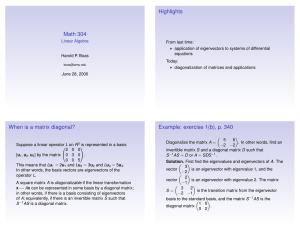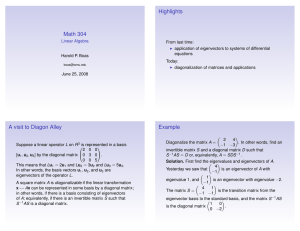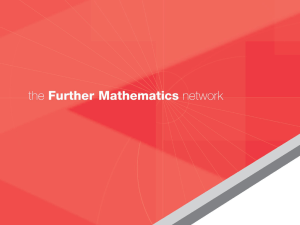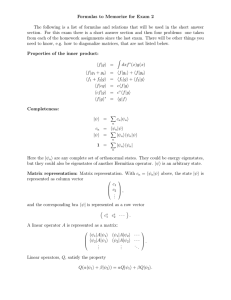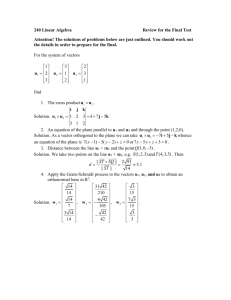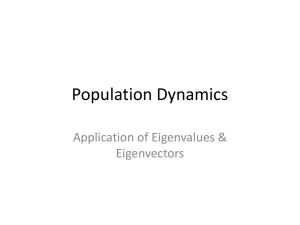Fundamental Matrices
advertisement
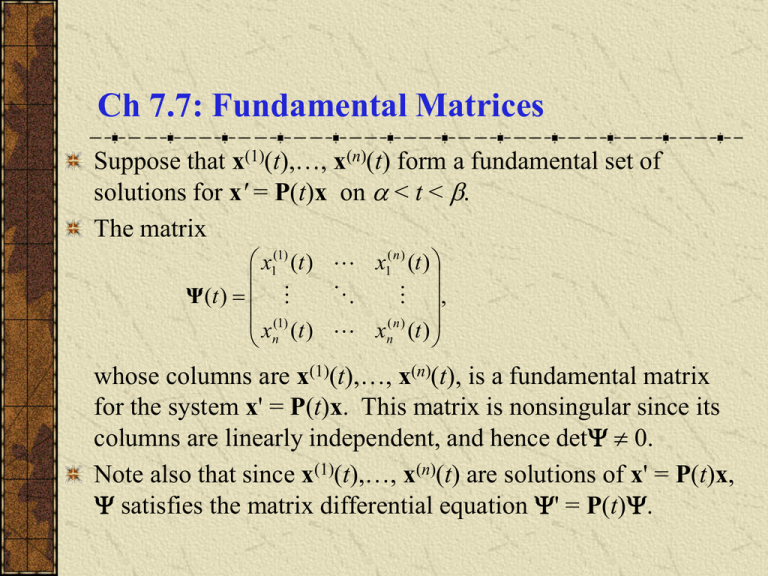
Ch 7.7: Fundamental Matrices Suppose that x(1)(t),…, x(n)(t) form a fundamental set of solutions for x' = P(t)x on < t < . The matrix x1(1) (t ) x1( n ) (t ) Ψ(t ) , x (1) (t ) x ( n ) (t ) n n whose columns are x(1)(t),…, x(n)(t), is a fundamental matrix for the system x' = P(t)x. This matrix is nonsingular since its columns are linearly independent, and hence det 0. Note also that since x(1)(t),…, x(n)(t) are solutions of x' = P(t)x, satisfies the matrix differential equation ' = P(t). Coupled Systems of Equations Recall that our constant coefficient homogeneous system x1 a11 x1 a12 x2 a1n xn xn an1 x1 an 2 x2 ann xn , written as x' = Ax with x1 (t ) a11 a1n x(t ) , A , x (t ) a n n1 ann is a system of coupled equations that must be solved simultaneously to find all the unknown variables. Uncoupled Systems & Diagonal Matrices In contrast, if each equation had only one variable, solved for independently of other equations, then task would be easier. In this case our system would have the form x1 d11 x1 0 x2 0 xn x2 0 x1 d11 x2 0 xn xn 0 x1 0 x2 d nn xn , or x' = Dx, where D is a diagonal matrix: x1 (t ) x(t ) , x (t ) n d11 0 D 0 0 d 22 0 0 0 d nn Uncoupling: Transform Matrix T In order to explore transforming our given system x' = Ax of coupled equations into an uncoupled system x' = Dx, where D is a diagonal matrix, we will use the eigenvectors of A. Suppose A is n x n with n linearly independent eigenvectors (1),…, (n), and corresponding eigenvalues 1,…, n. Define n x n matrices T and D using the eigenvalues & eigenvectors of A: T , (1) ( n ) n n (1) 1 (n) 1 1 0 0 2 D 0 0 0 0 n Note that T is nonsingular, and hence T-1 exists. Uncoupling: T-1AT = D Recall here the definitions of A, T and D: a11 a1n A , T , (1) ( n ) a a nn n n1 n (1) 1 (n) 1 1 0 0 2 D 0 0 0 0 n Then the columns of AT are A(1),…, A(n), and hence 11(1) n1( n ) AT TD (1) ( n ) n n 1 n It follows that T-1AT = D. Similarity Transformations Thus, if the eigenvalues and eigenvectors of A are known, then A can be transformed into a diagonal matrix D, with T-1AT = D This process is known as a similarity transformation, and A is said to be similar to D. Alternatively, we could say that A is diagonalizable. 1 0 (1) (n) a a 11 1n 1 1 0 2 A , T , D (1) ( n ) a a nn n n1 0 0 n 0 0 n Similarity Transformations: Hermitian Case Recall: Our similarity transformation of A has the form T-1AT = D where D is diagonal and columns of T are eigenvectors of A. If A is Hermitian, then A has n linearly independent orthogonal eigenvectors (1),…, (n), normalized so that ((i), (i)) =1 for i = 1,…, n, and ((i), (k)) = 0 for i k. With this selection of eigenvectors, it can be shown that T-1 = T*. In this case we can write our similarity transform as T*AT = D


